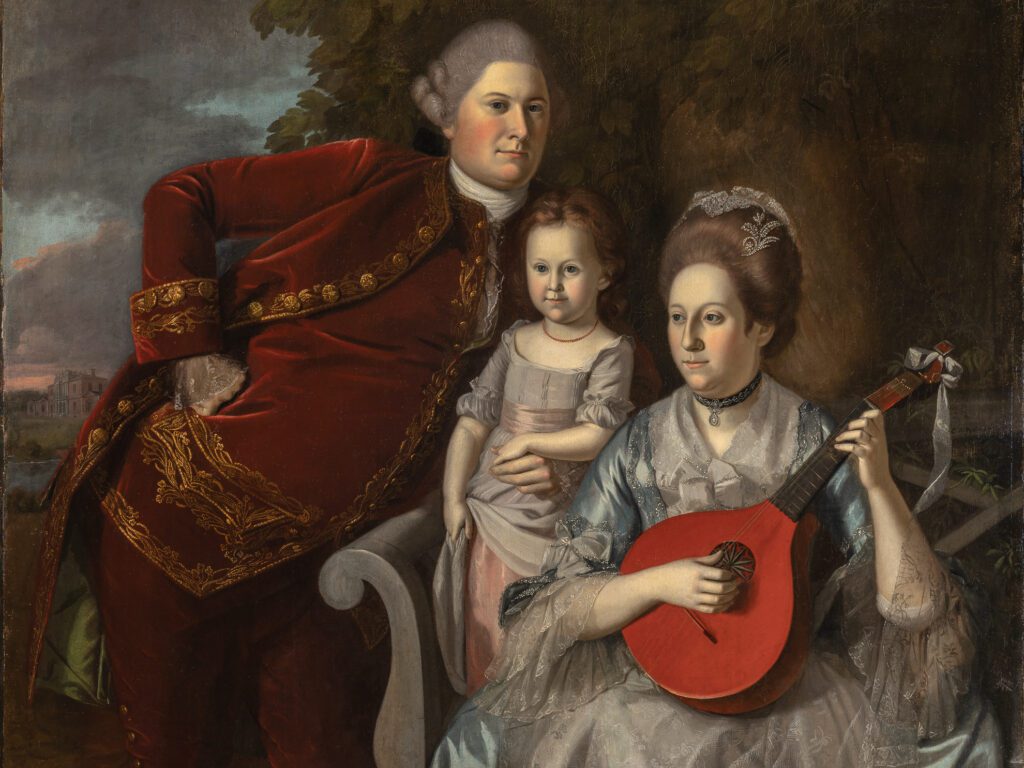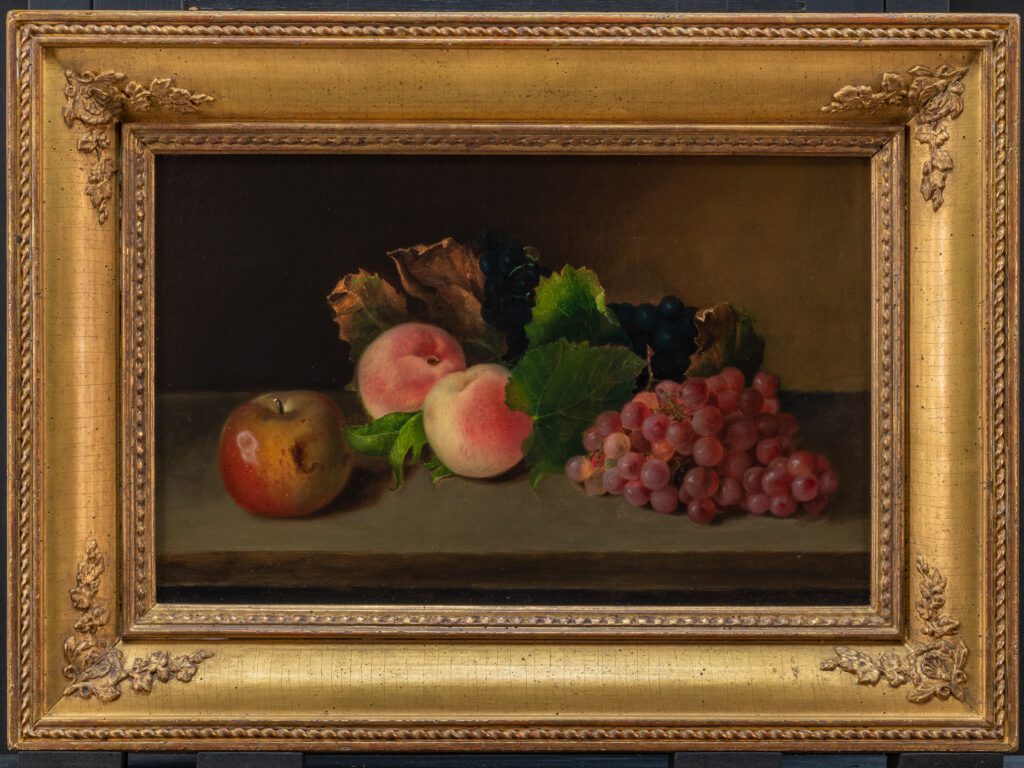
By Kedra Kearis, Ph.D., associate curator of art and visual culture
Not long after his return from the London studio of Benjamin West in 1771, Charles Willson Peale noted that he painted “Mr. Loyd [sic] a conversation,” a reference to the impressive, large-scale figural group, now in Winterthur Museum’s collection. The painting depicts Maryland planter Lloyd, his wife Elizabeth Tayloe, and their daughter Anne. Now recognized as The Edward Lloyd Family (fig. 1), his note “conversation” references a fashionable British portrait style that portrayed wealthy families engaged in conversation or leisure activities. Eager to display their wealth and status, this conversation piece features the Lloyds surrounded by objects that signal their wealth and sophistication, including rich imported textiles, elegant furniture, a handsomely carved cittern, or early English guitar à la mode. Charles referenced their estate—the Wye River estate located in Maryland— with an English garden pavilion based on a drawing in architect Isaac Ware’s well-known book of designs. A Winterthur favorite, this painting is now featured in the first-floor galleries as part of The Peale Painters: Global Perspectives in the Winterthur Collection. Details of the portrait can now be examined closely, revealing the contrasting pale green silk lining Edward’s scarlet and gold embroidered coat, the light reflected from Elizabeth’s jeweled hair comb and necklace, and the Palladian arches of the imagined Wye estate house.
Beyond the conversation in the painting between these fascinating sitters, another develops around the artist himself, head of the multi-generational clan of painters. Charles was responsible for mentoring his sons and daughters in the art of painting and the business of running the Philadelphian Peale’s Museum. This echoes a hallmark of the Peale family–the practices of teaching and learning, copying and collaboration. Besides the Lloyd portrait, the exhibit features works by his lesser-known brother James Peale, and those of subsequent generations of Peales. Two portraits from the early nineteenth century of du Pont women by Rembrandt Peale invite additional conversations about European art traditions of the past and the contemporary painting trends in Paris embraced by Rembrandt on his many travels abroad. Additionally, a case of small collection objects displays a silhouette from the early 1800s thought to be produced by profile cutter Moses Williams, a formerly enslaved member of the Peale household.

Another conversation arises from the exhibition around two recent acquisitions by the Museum completed by two female members of the Peale family, Sarah Miriam Peale and Mary Jane Peale, who both remained unmarried to pursue painting professionally. Mary Jane Peale’s Still Life with Fruit highlights her engagement with the Peale tradition of still life painting led by her uncles, Raphaelle and James (fig. 2). Mary Jane arrived at her talents under the mentorship of her Uncle Rembrandt and her cousin, Sarah Miriam. The experiences of Sarah and Mary, both in education and art production, mark important differences between the male and female artists of the family. The gallery interpretation includes a rich array of graphics, either self-portraits by the artists or portraits completed by another family member, illustrating this remarkable and ongoing conversation among the close-knit, generations of Peale artists. In addition, the story of their extraordinary artistic output paints a picture of a changing nation, one full of opportunity and encouragement, but also limitations and challenges.
